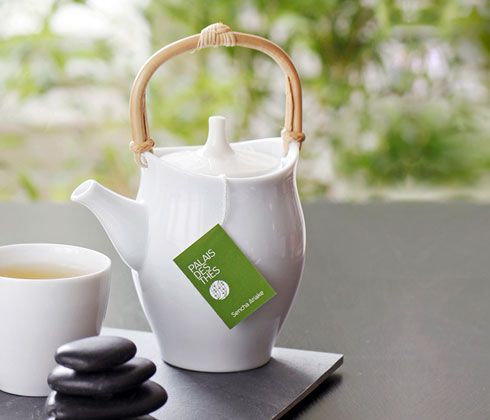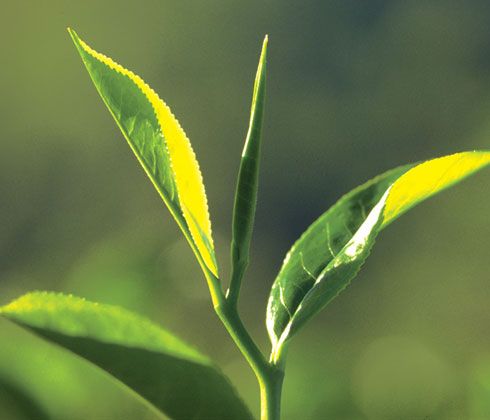Tea and health
Ever since its first appearance in Asia, tea has been considered beneficial for the body. Its oldest references come from historians advocating its medicinal properties: at first tea was used in the form of a paste, as a poultice to combat rheumatism. Legends about tea, whether Chinese, Indian or Japanese, all show, in their own way, the stimulating and invigorating properties of tea.
The Emperor Shen Nung, father of Chinese medicine and farming, states in his Medical Book that, "tea relieves tiredness, strengthens the will, delights the soul and enlivens the sight." Tea drinkers have know empirically the many benefits of tea for over two thousand years.

Xanthics
There are three xanthics present in tea: caffeine, theophylline and theobromine. These are organic substances that are found in all types of teas whatever its colour.
How to "de-theinate" your tea
It is very easy to "de-theinate" tea yourself without affecting the flavour. This is because the caffeine in tea is released during the first few seconds of infusion. Simply rinse the leaves first with freshly boiled water and discard this first infusion after approximately 10 seconds.

Tannins or polyphenols
Tannins in tea are similar substances to the tannins found in wine, both have very similar properties. Some characteristics of tea, like its colour, its body or its strength, are directly dependent on these polyphenolic derivatives and on the changes they have undergone. It is easy to recognise a tea that is high in tannin by the astringency of the drink, which sometimes translates into bitterness if the tea has been over brewed: tannins are released slowly but in an ever increasing way, so that an overly long infusion considerably raises their concentration and makes the tea bitter. This research is not, in any way, taking place within a therapeutic framework but solely in terms of preventative dietary guidelines.
Tea, vitamins and minerals
Tea contains vitamin C (about 250mg per 100g of fresh leaves). Unfortunately, this is completely destroyed from the minute the tea is infused in water at a temperature above 30°C. Tea cannot, therefore, be used as a source of vitamin C. Tea also contains a considerable amount of vitamin P, B group vitamins and minerals suchs as potassiuma and fluoride. .
Tea and iron
It is often said that drinking tea lowers iron levels in the blood.
Indeed, the tannins present in tea, while being very beneficial to the body on many counts, do have one defect: they prevent the iron contained in foods from being totally absorbed by the body during digestion. A heavy daily consumption of tea (more than 1.5 litres) could have an effect on the body's absorption of iron. This does not pose a problem if the tea drinker does not suffer from an iron deficiency and has a well-balanced diet. If this is not the case, it is recommended to wait for 40 minutes after meals before drinking tea.
Iron absorbed by the human body is found in red meats and, to a much lesser extent, in vegetables. A vegetarian therefore has a greater risk of iron deficiency. Pregnant women are also more at risk: during this period it might be better to limit consumption of tea.